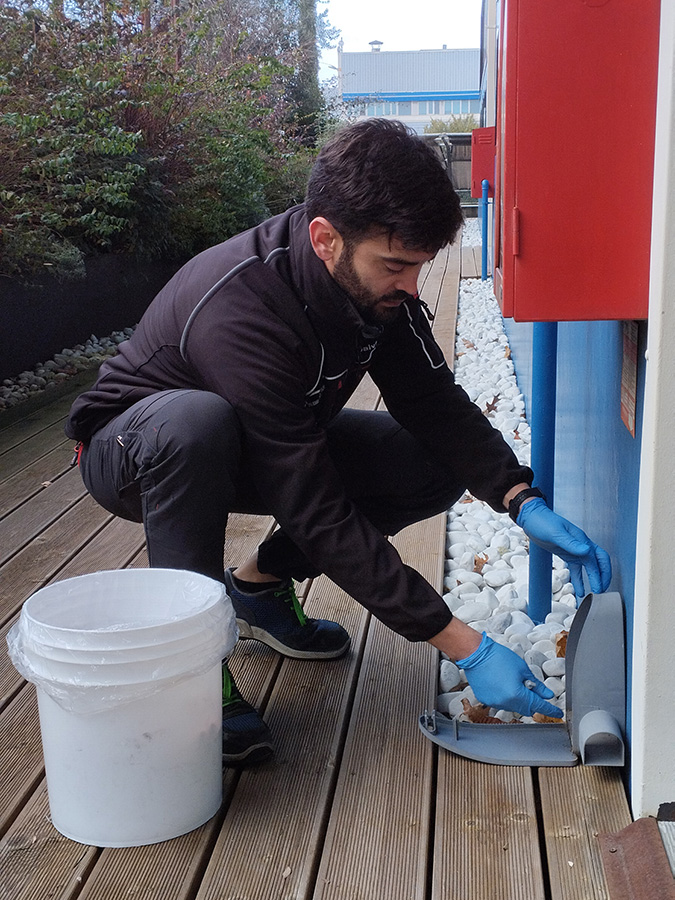
We provide cutting-edge, sustainable rodent monitoring and control systems, designed to suit the specific environments and customer requirements.
In addition to causing material damage, mice and rats can pose a significant risk to hygiene and public health. If you have identified the presence of rodents in your business or home and require a prompt and effective resolution, we invite you to contact us!
There are three main species belonging to the Muridae family that present a risk to human activity:
- The first is the house mouse (Mus musculus), which is medium-sized, measuring approximately 7-10 centimetres. The animal has short, shiny fur and is light brown or black-grey in colour. It inhabits a variety of human-made structures, including houses, stables, and warehouses, as well as other locations where it can find food and shelter. Its diet consists of plants, insects, and mites. It has a high breeding rate, with the potential to produce up to 10 litters per year.
- The black roof rat (Rattus rattus) is a large species, measuring between 16 and 24 centimetres in length. The animal has smooth, shiny fur and is black or dark grey in colour. This species is particularly fond of elevated locations, such as roofs, attics, false ceilings, barns and harbours. It feeds on grains, fruit, vegetables and meat and is highly proficient at jumping and climbing.
- The brown or sewer rat (Rattus norvegicus) is the largest rodent in Europe, with a length of between 21 and 29 centimetres. The animal’s fur is shaggy and matted, with a brown or light grey colouration. It primarily inhabits sewer systems, basements, and waste storage facilities, but has also been observed in warehouses and commercial establishments, particularly those engaged in food production. It is omnivorous, feeding on a variety of materials, including human waste, and is highly resilient to disease.
It is important to be aware that mice and rats can cause damage in civil and industrial environments. In addition to the contamination of goods and food supplies with excrement and urine, rodents have hard and constantly growing teeth. This makes them always on the lookout for materials to gnaw on in order to sharpen them. Their preferred materials are wood, cardboard and plastic (including electrical cables), which can cause damage to furniture and especially to electrical equipment and industrial and civil machinery.
It is not only an annoyance, but also a danger to human and animal health. Infectious diseases can be transmitted by these animals through their bite, faeces, urine or fleas. Some of these diseases, which are particularly dangerous for humans, include Leptospirosis, Salmonellosis, Bubonic Plague and Rabies.
If you have noticed the presence of rodents on your premises, please do not hesitate to contact us at your earliest convenience!
As experts in pest management, we offer free advice and a personalised, no-obligation quote.
Our company is certified to the UNI EN ISO 9001 and UNI EN 16636 standards. We are your ideal partner for resolving a single rodent infestation and developing and maintaining an Integrated Pest Management plan that meets your needs, those of the legislation in force (H.A.C.C.P.) and voluntary standards (BRC, IFS, ISO 22000, etc.).

